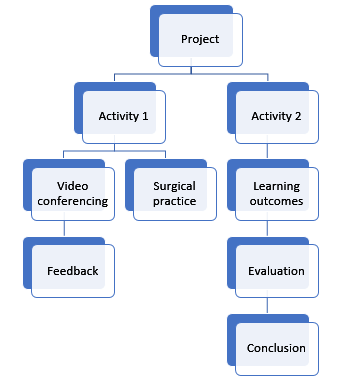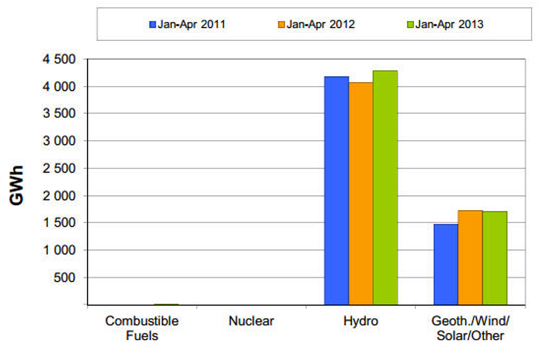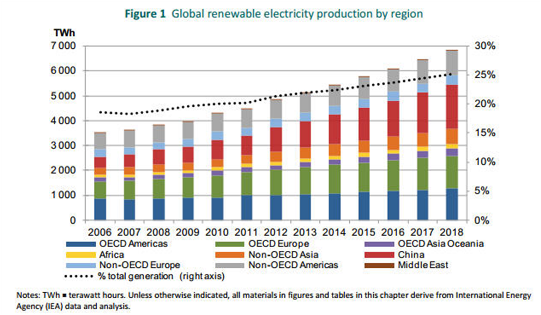The modern society is faced with several challenges, but the issue of climate change is of much concern to many policy makers. The emission of greenhouse gases is the biggest challenge that the planet has ever faced due to the potential effects of the carbon compounds, which are known to interfere with the normal functioning of the body (Boyle 2004, p. 6). Unfortunately, the fossil fuel consumption is still the main source of energy and the situation is expected to remain the same for several years. Since many governments are focused on reducing overdependence on fossil fuel and minimizing the effects of greenhouse gas emissions, several strategies have been formulated to increase the usage of renewable energy, as it is viewed as an alternative to the highly unreliable and inefficient natural sources of energy (Mendonça 2007, p. 31).
Currently, several governments are committed to programs supporting the setting up of projects that have the capability of generating nuclear energy since it is one of the most reliable sources of energy given the fact it can be reused. One of the factors that force various governmental and non-governmental organizations to insist on the usage of renewable energy is the issue of climate change, which is attributed to anthropogenic greenhouse gas emission. An intergovernmental panel on climate change held in 2007 observed clearly that carbon dioxide is the major contributor of environmental degradation and the only way out is to shift to the use of renewable energy.
With continued emission of the dangerous gases, the society is likely to face economic, environmental, and social consequences (McLaren 2007, p. 2650). The use of fossil fuel supports electricity generation, heating, transportation, and industrial production meaning that it cannot be replaced that easily. If proper measures are not adopted, the human race is destined to failure and the only option is to utilize the safer sources of energy (Goldemberg 1996, p. 51). Studies show that renewable electricity generation capacity is expected to rise, as indicated in the graph below (energy (Elliot 2004, p. 80).

International conferences held in various parts of the world, including the Kyoto protocol, conclude that environmental consequence, which is mainly caused by climate change, will trigger massive economic and social effects and this would have an overriding burden on the environment (Lund 2006, p. 2330). Through international cooperation, the participants agree that a solution would be reached, as each person will be involved. In this regard, it is observed that the governmental incentive on renewable energy serves as a driver for the establishment of safer sources of energy. The government is always concerned with the welfare of its people and it will do everything possible to ensure that citizens live comfortably.
If the project were left in the hands of private investors, chances of its success would be minimal since distribution channels tend to favor the traditional practices meaning fossil fuels would be favored (Lewis & Wiser 2007, p. 1847). As Mallon (2006) notes, regional and local governments lack the power to act unilaterally, something that interferes with the development of alternative source of energy.
The business community is not left behind as far as development of renewable energy is concerned because their main objective is always to maximize stockholder value through improvement of profits and growth of dividends (Friedman & Mills, 2006). Multinational companies have enormous capital to an extent that they enjoy the economies of scale and this means they have influence on social and political activities in any society. In fact, large corporations have the capacity of enhancing market acceptance as regards technological transformation structures (Gipe 1995, p. 90). On the other hand, the non-governmental corporations have been engaging in activism to force the concerned authorities to shift from overreliance on fossil fuels to the cleaner sources, such as solar-energy (Betsill & Corell 2008, p. 56).
While some non-governmental organizations might be interested in preserving the environment, others have economic objectives, such as the International Chamber of Commerce, which is always interested in sustainable development (Kelly 2007, p. 631).
These organizations are powerful because of their influence on society, something that helps them in convincing the concerned stakeholders to do away with fossil fuels and resort to safer sources of energy to facilitate development in the future (Friedman & Miles 2006, p. 112). The renewable energy market is expected to expand in the coming years, as the following graph shows, particularly hydropower generation (Vig & Faure 2004, p. 20).

Recently, local communities are engaged in programs aimed at conserving the environment and they can be viewed as the major driver of renewable energy. In developed economies, individuals are always urged to reduce energy consumptions in their homes. If the government or any other organization develops policies to introduce renewable energy and the local community is reluctant to support them, chances are high that the objective will not be achieved (Geller 2003, p. 54).
The local community has been playing a critical role in developing new sources of energy since they are consumers and they have the power to choose what they use in their homes. Finally, development of renewable energy cannot be achieved without the participation of the academic community. In fact, they have played a critical role in the sense that they engage in research to prove to the community that fossil fuels are not efficient sources of energy (Elliot 2004, p. 88). In the year 2016, renewable energy will have expanded by twenty-five percent globally up from twenty percent in 2011, having increased from nineteen percent in 2006, as the following graph indicates (Geller 2003, p12)

Barriers
According to the views of various scholars, development of renewable energy is a challenge that has to be addressed in case the world is to achieve future developmental goals and objectives. One of the major barriers to the projects aiming at developing safer sources of energies is the lack of political support both nationally and locally (Arnulf 2005, p. 1416).
Many governments, especially those in the developing countries, are reluctant to engage in sustainable development because they lack sufficient technologies needed in developing alternative sources. Based on this, they are simply focused on exploring fossil fuels to achieve economic interests without taking into consideration their effects on the environment (Lund1999, p. 440). The second barrier is insufficient information, education, and awareness programs among the locals who resist the alternative sources of energy with claims that they are costly and unsafe. For instance, nuclear power is an issue of concern to many locals, as many observe that it might cause accidents with severe consequences (Jacobsson & Johnson 2000, p. 632).
Even though governments are trying to fund programs aiming at developing alternative sources of energies, lack of funds and unfavorable economic conditions still affect the projects. Projects designed to facilitate development of cleaner and safer energies lack a clear funding system, as they simply rely on diminutive resources provided by the ministries of energy, which are never sufficient in supporting any energy program (Meyer 2007, p. 354). Additionally, many societies do not have adequate personnel to engage in the development of renewable energy since high skills are needed to establish these alternative sources of energy. In developing countries, renewable energy depends on the foreign labor, which is also unreliable (Vig & Faure 2004, p. 26).
List of References
Betsill, MM & Corell, E 2008, NGO Diplomacy, The Influence of Non Governmental Organizations in International Environmental Negotiations, MIT Press, New York. Web.
Boyle, G 2004, Renewable Energy, Oxford University Press, Oxford. Web.
Elliot, L 2004, The Global Politics of the Environment, Palgrave McMillan Publications, New York. Web.
Friedman, A & Miles, S 2006, Stakeholders Theory and Practice, Oxford University Press, Oxford. Web.
Geller, H 2003, Energy Revolution, Polices for a Sustainable Future, Island Press, Washington. Web.
Gipe, P 1995, Wind Energy Comes of Age, John Wiley & Sons, Upper Saddle River. Web.
Goldemberg, G 1996, Energy Environment and Development, Earthscan Publications Ltd, New York. Web.
Mallon, K 2006, Renewable Energy Policy and Politics, Earthscan, New York. Web.
Mendonça, M 2007, Feed-in Tariffs, Accelerating the Deployment of Renewable Energy World Future Council, Earthscan, New York. Web.
Vig, N & Faure M 2004, Green Giants? Environmental Policies of the United States and the European Union, Massachusetts Institute of Technology (MIT), Massachusetts. Web.
Arnulf J 2005, “Photovoltaics and renewable energies in Europe,” Renewable & Sustainable Energy Reviews, Vol. 11, no. 2, pp 1414-1437. Web.
Jacobsson S & Johnson, A 2000, “The diffusion of renewable energy technology: an analytical framework and key issues for research,” Energy Policy, Vol. 28, no. 3, pp 625-640. Web.
Kelly,G 2007, “Renewable energy strategies in England, Australia and New Zealand”, Science, Vol. 37, no.1, pp 326-338. Web.
Lewis JI & Wiser, RH 2007, “Fostering Renewable Energy Technology Industry: An International Comparison of Wind Industry Support Mechanisms,” Energy Policy, Vol. 35, no. pp 1844-1857. Web.
Lund, H 1999, “A Green Energy Plan for Denmark, Job Creation as a Strategy to Implement Economic Growth and CO2 Reduction,” Journal of Environmental and Resource Economics, Vol. 14, no. 4, pp 431–439. Web.
Lund H 2006, “The Kyoto mechanisms and Technological innovation,” Energy, Vol. 31, no. 3, pp 2325-2332. Web.
McLaren, LJ 2007, “Wind Energy Planning in England, Wales, and Denmark: Factors influencing project success,” Energy Policy, Vol. 35, no. 5, pp 2648-2660. Web.
Meyer, N 2007, “Learning from Wind Energy Policy in the EU: Lessons from Denmark, Sweden and Spain,” European Environment, Vol. 17, no. 1, pp 347-362. Web.
